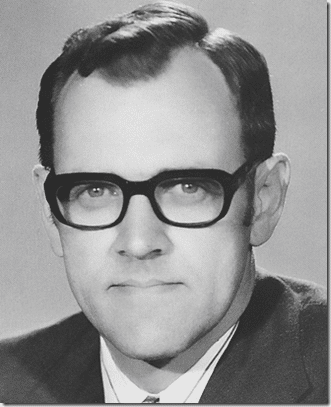Actions in ‘Bad Faith’

‘The decision to err, or to work unsafely, is often a very logical choice that is made either consciously or unconsciously by the worker.’
Of course this is a non-sense, many actions we take don’t involve rational choice and/or rationality, nor do we have rational control over unconscious decisions.
It is remarkable how Safety attributes rationality to unconscious human decision making in its quest to find a reason for ‘human error’. If one is unconscious or takes an action unconsciously then by definition one will not be ‘conscious’ of one’s thinking or motivations for that action.
An action taken unconsciously most certainly cannot be described as a ‘rational’ decision but rather a non-rational (arational) decision. And most certainly in disagreement with Ariely (Predictably Irrational) such an action cannot be considered an irrational decision. As Satre (Anti-Semite and a Jew, An Exploration of the Etiology of Hate, 1944, p.12) stated emphatically: ‘How can anyone chose to reason falsely?’ Satre called the unconscious action towards dehumanization due to social influences ‘bad faith’ (https://en.wikipedia.org/wiki/Bad_faith). Bad faith addresses many assumptions constructed in the notion of fallibility as ‘defilement’. However, The Social Psychology of Risk helps understand how non-rational forces affect and influence decision making (https://safetyrisk.net/understanding-the-social-psychology-of-risk-and-safety/ ).
In Being and Nothingness Satre defined ‘bad faith’ as: ‘hiding the truth from oneself’. We all know just how common this is, ‘bad faith’ often surfaces in denial and self-delusion. Sometimes a good fantasy is easier to sustain than the pain of the truth.
So, if one acts under the pressure of political conformance in obedience to the Nazis, in what way is one ‘responsible’ for ones’ actions? This was one of the powerful questions that drove the foundations for study in Social Psychology following WW2. If one acts under self-deception in automaticity to what extent can one be ethically or forensically responsible? If one has been brought up to be sadistic, fundamentalist or ‘primed’ to act in ‘bad faith’, like many of the children I worked with in youth detention (see Risk Makes Sense, 2012, p.24ff) in what way are they responsible for their non-rational actions? So to what extent is the person ‘conditioned’ by religious indoctrination rationally ‘responsible’ for their actions? This is not to dismiss the act of terrorism but rather to highlight the challenge of understanding the dialectic between conscious and unconscious action. This is something the courts deliberate on when crimes are committed in ‘bad faith’.
At the start of the next Chapter Petersen (p.125) states:
‘The second type of decision to err is the unconscious decision; the worker decides unconsciously that it makes more sense to operate unsafely than safely’.
Again what strange logic. How does an unconscious course of action equate to a rational thinking decision? How can this unconscious action be described as ‘sensemaking’? Who ‘decides’ they want to operate unsafely? The very definition of an ‘accident’ assumes there was no rational ‘decision’.
This whole construct by Petersen and much of what is taught in accident causation in safety curricula ignores what is known about the nature of the unconscious, heuristics and automaticity. How can a person in an unconscious state be responsible for a ‘conscious’ decision to be unsafe?
Most human decision making often operates in the arational space, based on heuristics (fast and efficient thinking) or by automaticity due to social arrangements. (Further see the brief videos One Brain Three Minds https://vimeo.com/106770292 or https://vimeo.com/156926212, or Understanding the Unconscious in Risk and safety https://vimeo.com/135536440 )
Understanding the Unconscious, Risk and Safety from Human Dymensions on Vimeo.
It is through heuristics and automaticity that fallible humans are able to undertake actions quickly ‘without thinking’. We want people to make decisions with heuristics as this makes them fast and efficient (see Gigerenzer Simple Heuristics That Make Us Smart). Add to this the nature of social circumstance and randomness and many more courses of action humans take are undertaken without thinking. For example, the ‘fight and flight’ response is a necessary heuristic designed to keep us safe. Similarly, the heuristics of attribution, recency and affect enable fallible humans to keep safe. Unfortunately, the same skills required to look for patterns in behavior to make predictions for safety are also the same skills that lead to misattribution and a number of distortion ‘effects’ (foe example the ‘Hot Hand’ fallacy https://en.wikipedia.org/wiki/Hot-hand_fallacy ) This is the ambiguity and paradox of being a fallible and mortal human.
This is why the saying ‘safety is a choice you make’ is a nonsense.
Don’t we wish that actions were as easy to punish as simple violations or mistakes. How neat and tidy to sit with Reason’s ‘Acts and Violations’ and think we have some definitive model of human error (http://www.tandfonline.com/doi/pdf/10.1080/00140139508925221 ). How easy to hide behind the language of human error and cast judgment on ‘all accidents are preventable’. How much more challenging to actually tackle the problem of ‘bad faith’ and investigate incidents that actually may have no rational cause.



Do you have any thoughts? Please share them below